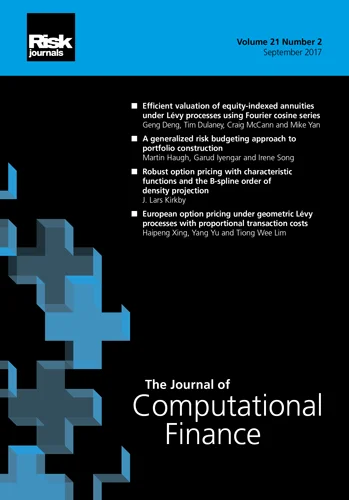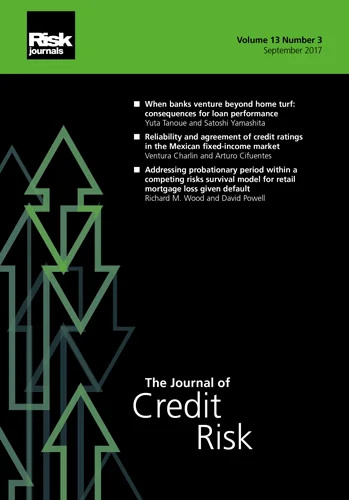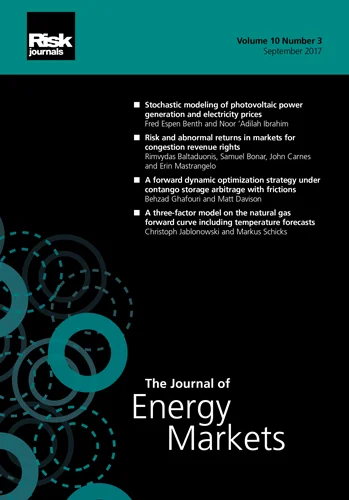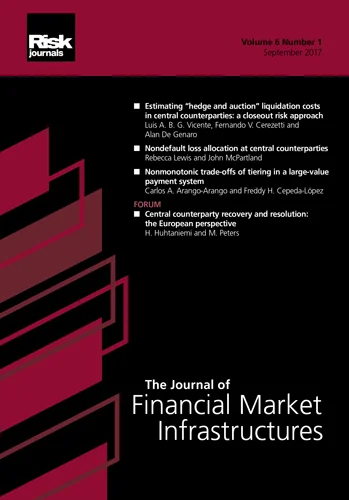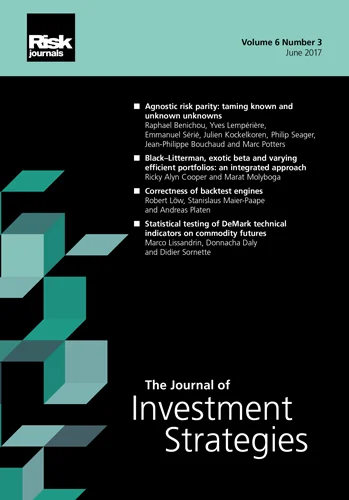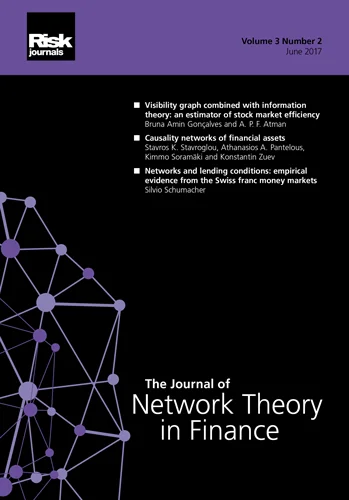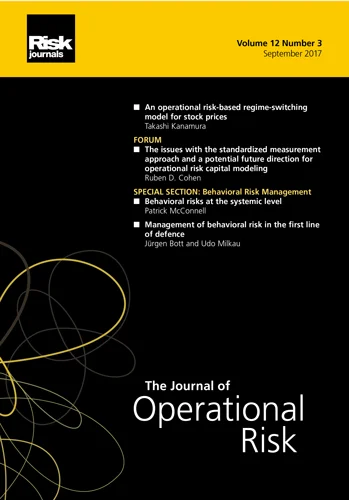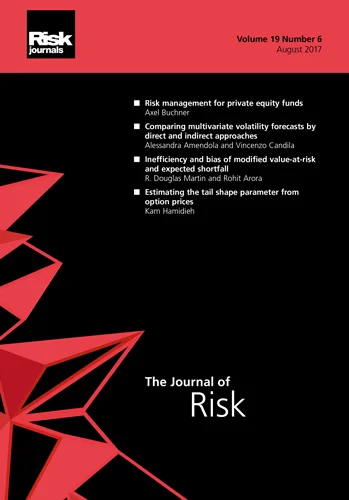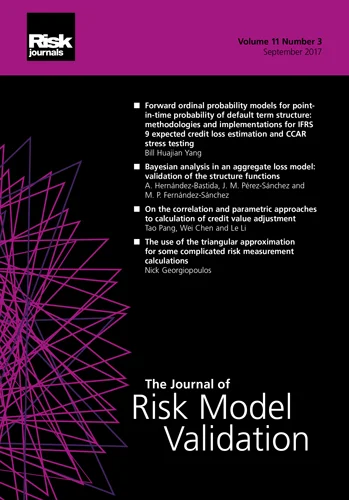Journal of Financial Market Infrastructures
ISSN:
2049-5412 (online)
Editor-in-chief: Manmohan Singh
Deputy Editor: Jorge Cruz Lopez and Anneke Kosse
About this journal
The economic and technological landscape of financial market infrastructures (FMIs) is rapidly evolving and changing how we conduct transactions globally. Efforts to renew and strengthen payment, clearing and settlement systems have been undertaken internationally and the role of new technologies, including digital money, CBDCs, blockchains and smart contracts, is being continuously reassessed.
The Journal of Financial Market Infrastructures was the first journal to specialize in publishing peer-reviewed research in FMIs. Today, over a decade after its first publication, the journal continues to offer its readers a selection of the best ideas, developments and analysis in this dynamic and exciting sector of the economy.
The Journal of Financial Market Infrastructures considers submissions in the form of technical papers and policy-oriented papers (forum discussions) from academics and practitioners on topics including, but not limited to:
- Payment and settlement systems
- Digital money (including CBDCs) and central bank operations
- Trade repositories, central counterparties (CCPs) and central securities depositories (CSDs)
- Risk management of FMIs (including liquidity, market, counterparty, operational and other risks).
- Correspondent banking and network analysis of FMIs
- Non-bank payment service providers and access to central bank payment rails
- Exchanges and multilateral trading platforms
- Regulation, oversight and supervision of FMIs
- Tokenized deposits and stablecoins
- New technologies for FMIs, including distributed ledger technologies (DLTs), machine learning (ML) and artificial intelligence (AI)
Abstracting and Indexing: Clarivate Analytics Emerging Sources Citation Index; EconLit; EconBiz; and Cabell’s Directory
Journal Metrics:
Journal Impact Factor: 0.3
5-Year Impact Factor: 0.4
Latest papers
A liquidity black hole: what is the impact of a failing participant in a large-value payment system, and does time matter?
The authors out forward a technique with which to detect potential failing participants in large value payment systems as quickly as possible.
Quantum-readiness for the financial system: a road map
This paper provides a framework to support the financial system in the transition to quantum-safe cryptographic infrastructures, emphasising the need to start the transition today.
The crypto Wild West: a deep dive into the market volatility of junk coins versus Bitcoin
The authors assess the volatility of Bitcoin returns versus those of Dogecoin, Shiba Inu and Baby Doge Coin, finding that Bitcoin exhibits lower volatility and is the benchmark cryptoasset.
Let’s speak the same language: a formally defined model to describe and compare payment system architectures
The authors propose a means with which to represent and compare three key functions of payment system architectures: issuance/withdrawal, holding and transfer of funds.
Toward immediacy and continuity in money and finance?
This paper investigates the relationship between developments in information and communication technology and changes in the time structure of money and finance.
How concentrated is the clearing ecosystem and how has it changed since 2007?
This paper uncovers changes to concentration of the clearing ecosystem and how it has changed since the 2007-9 financial crisis.
Skin in the game: risk analysis of central counterparties
This paper proposes a novel framework to design the capital contribution of a central counterparty (CCP) to its default waterfall - CCP "skin in the game".
Digital money and finance: a critical review of terminology
The authors put forward an etymology of key concepts and review key terminology and definitions within the sphere of decentralized finance to facilitate discussions about their merits and use cases/
Till def(ault) do us part: reassessing counterparty risk between global systemically important banks and central counterparties
The authors investigate how far liquidity at G-SIBs may be available to CCPs prior to a G-SIB resolution beginning and before a forced closeout is necessary, allowing the G-SIB to continue trading with a CCP until a payment default occurs.
Central clearing and trade cancellation: the case of London Metal Exchange nickel contracts on March 8, 2022
This paper explores the 2022 nickel price event on the London Metal Exchange, examining LME’s response to the market stress, court verdicts and the potential impact on CCP rule books.
Retail payment technology and money demand: evidence from China
Using evidence from China between 1999 and 2020, the authors investigate the impact of retail payment technology on money demand.
Functional consistency across retail central bank digital currency and commercial bank money
The authors discuss the ‘digital pound’ and how to ensure that retail CBDCs and commercial bank money have common operational characteristics and offer functional consistency.
The fundamental role of the repo market and central clearing
The authors evaluate different economic functions of repo contracts and offer a summary of the structure of government bond repo markets in core advanced economies.
Can tax evasion be reduced by fostering cashless payments? A systematic literature review
This paper offers a review of literature on how different payment methods impact tax evasion, finding cash to facilitate tax evasion and digital methods of payment to make evasion more difficult.
On par: a money view of stablecoins
The authors apply a money view analysis to stablecoins, revealing the character if existing on-chain liquidity mechanisms that support the premise of par settlement and finding liquidity rather than solvency to be the factor confronted by par settlement.
Financial industry adoption of distributed ledger technologies: implications for central bank money settlement
The authors investigate the Eurosystem's exploring of central bank money settlement through distributed ledger technology and look forward to potential next steps.
The market liquidity of interest rate swaps
The authors investigate dynamics and drivers of market liquidity in Euribor interest rate swaps, constructing seven liquidity swaps using data from centrally cleared trades.
Correlation breakdowns, spread positions and central counterparty margin models
The authors investigate correlation behavior during adverse market conditions and the potential impact on CCP margins, finding that such breakdowns appear to be more common than expected.
Just solve it: a simple method to improve the design and performance of liquidity-saving mechanisms
The authors put forward a novel LSM algorithm and compare its performance with two of the best known offsetting algorithms.
Alternative margin models for mortgage-backed securities
The authors investigate mortgage-backed securities, applying margin frameworks often used on other asset classes to MBSs which could be uses as a supplemental model framework.
